Disturbances in the liquid tend to complicate liquid level measurement. These disturbances may result from liquid introduced into a vessel above the liquid level (splashing into the liquid’s surface), the rotation of agitator paddles, and/or turbulent flows from mixing pumps.
Any source of turbulence for the liquid surface (or liquid-liquid interface) is especially problematic for echo-type level sensors, which only sense interfaces between vapors and liquids, or liquids and liquids.
If it is not possible to eliminate disturbances inside the process vessel, a relatively simple accessory one may add to the process vessel is a vertical length of pipe called a stilling well.
To understand the principle of a stilling well, first consider the application of a hydraulic oil reservoir where we wish to continuously measure oil level.
The oil flow in and out of this reservoir will cause problems for the displacer element:
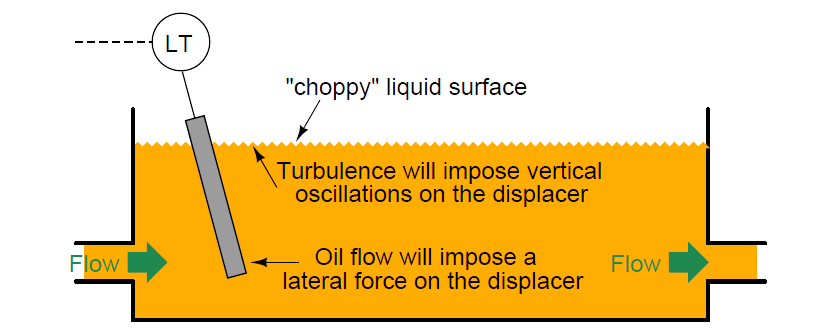
A section of vertical pipe installed in the reservoir around the displacer will serve as a shield to all the turbulence in the rest of the reservoir.
The displacer element will no longer be subject to a horizontal blast of oil entering the reservoir, nor any wave action to make it bob up and down.
This section of pipe quiets, or stills, the oil surrounding the displacer, making it easier to measure oil level:
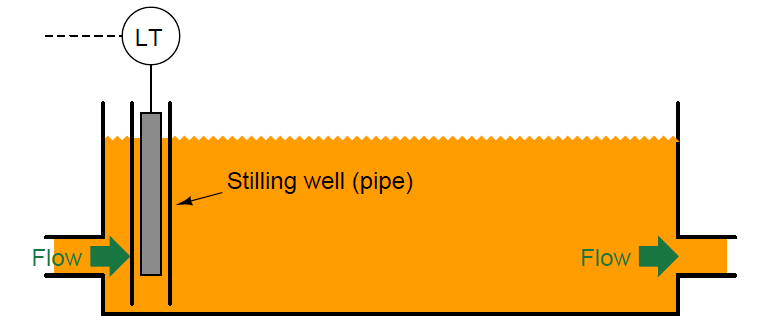
Stilling wells may be used in conjunction with many types of level instruments: floats, displacers, ultrasonic, radar, and laser to name a few.
If the process application necessitates liquid-liquid interface measurement, however, the stilling well must be properly installed to ensure the interface level inside the well match the interface levels in the rest of the vessel.
Consider this example of using a stilling well in conjunction with a tape-and-float system for interface measurement:
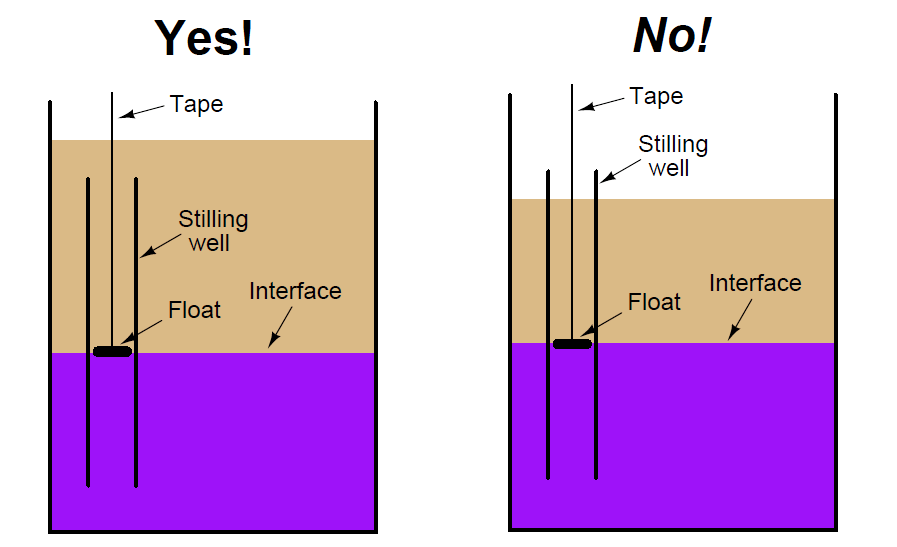
In the left-hand installation where the stilling well is completely submerged, the interface levels will always match.
In the right-hand installation where the top of the stilling well extends above the total liquid level, however, the two levels may not always match.
This potential problem for the non-submerged stilling well is graphically illustrated here:
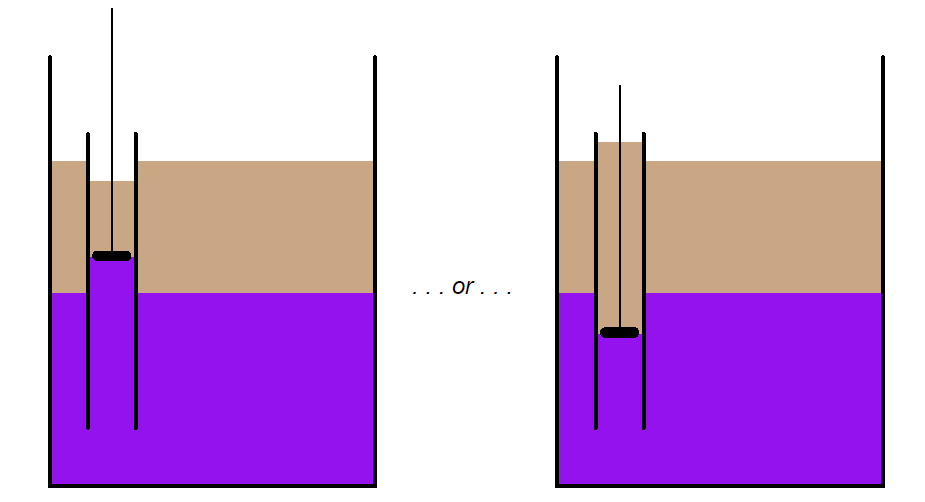
The problem here is analogous to what we see with sightglass-style level gauges: interfaces may be reliably indicated if and only if both ends of the sightglass are submerged ( for an illustrated explanation of the problem, check this Article CLICK HERE ).
If it is not possible or practical to ensure complete submersion of the stilling well, an alternative technique is to drill holes or cut slots in the well to allow interface levels to equalize inside and outside of the well tube:
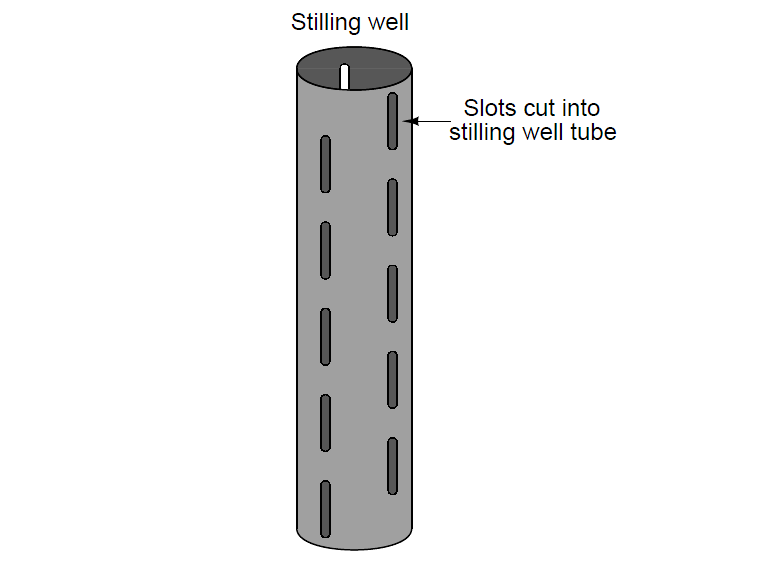
Such equalization ports are commonly found as a standard design feature on coaxial probes for guided-wave radar level transmitters, where the outer tube of the coaxial transmission line acts as a sort of stilling well for the fluid.
Coaxial probes are typically chosen for liquid-liquid interface radar measurement applications because they do the best job of preventing dispersion of the electromagnetic wave energy, but the “stilling well” property of a coaxial probe practically necessitates these equalization ports to ensure the interface level within the probe always matches the interface level in the rest of the vessel.
Credits : Tony R. Kuphaldt – Creative Commons Attribution 4.0 License